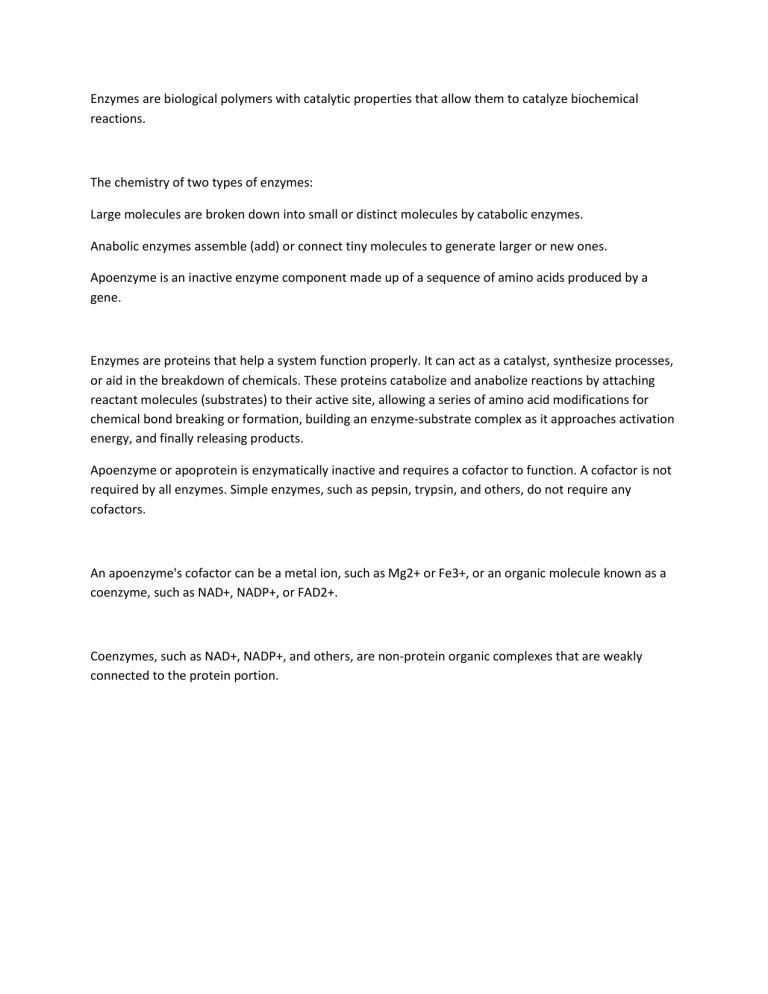
Enzymes are biological polymers with catalytic properties that allow them to catalyze biochemical reactions. The chemistry of two types of enzymes: Large molecules are broken down into small or distinct molecules by catabolic enzymes. Anabolic enzymes assemble (add) or connect tiny molecules to generate larger or new ones. Apoenzyme is an inactive enzyme component made up of a sequence of amino acids produced by a gene. Enzymes are proteins that help a system function properly. It can act as a catalyst, synthesize processes, or aid in the breakdown of chemicals. These proteins catabolize and anabolize reactions by attaching reactant molecules (substrates) to their active site, allowing a series of amino acid modifications for chemical bond breaking or formation, building an enzyme-substrate complex as it approaches activation energy, and finally releasing products. Apoenzyme or apoprotein is enzymatically inactive and requires a cofactor to function. A cofactor is not required by all enzymes. Simple enzymes, such as pepsin, trypsin, and others, do not require any cofactors. An apoenzyme's cofactor can be a metal ion, such as Mg2+ or Fe3+, or an organic molecule known as a coenzyme, such as NAD+, NADP+, or FAD2+. Coenzymes, such as NAD+, NADP+, and others, are non-protein organic complexes that are weakly connected to the protein portion.



